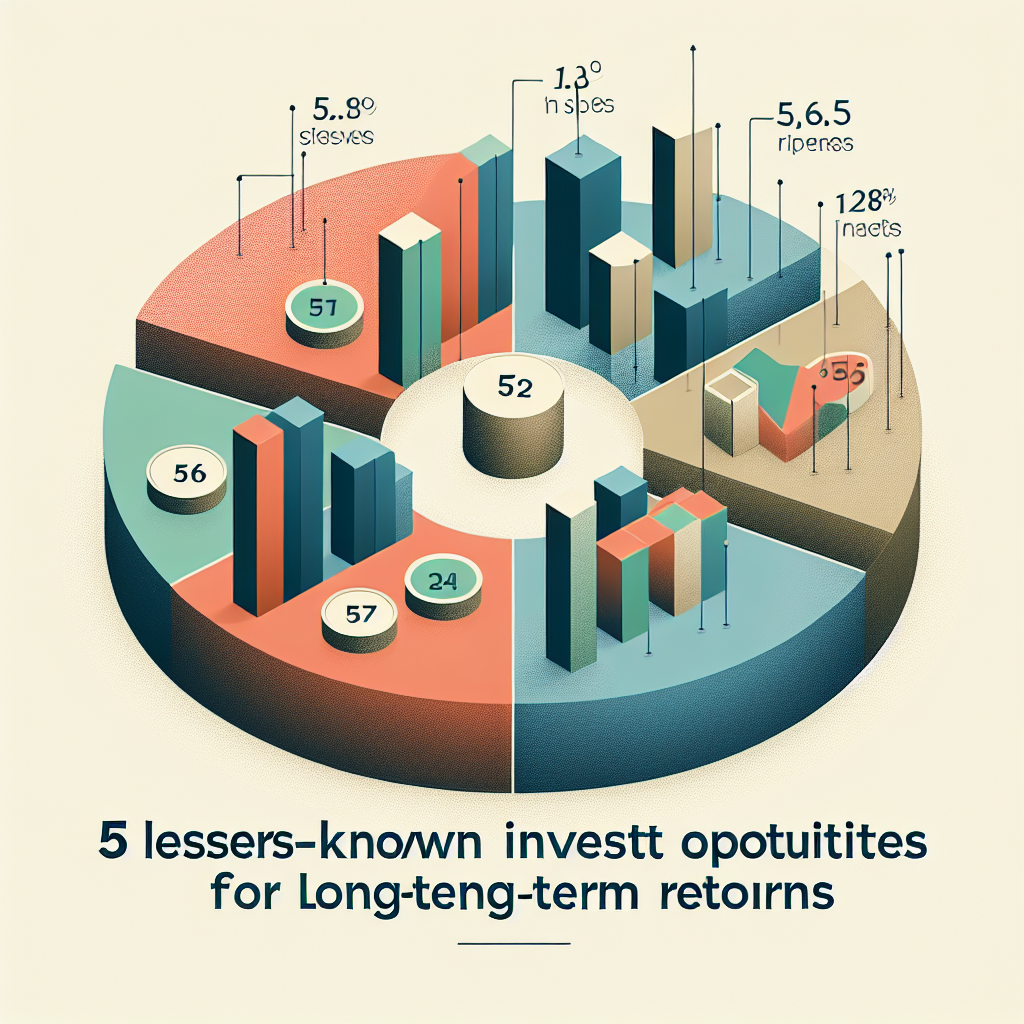Elon Musks visionära tänkande och dess inverkan på teknikbranschen
The Impact of Elon Musk’s Innovative Thinking on the Tech Industry
Elon Musk is a name that has become synonymous with innovation and forward-thinking in the tech industry. From his early days as a co-founder of PayPal to his current ventures with SpaceX and Tesla, Musk has consistently pushed the boundaries of what is possible and challenged the status quo. His visionary thinking has not only revolutionized the industries he has been a part of, but it has also had a significant impact on the tech industry as a whole.
One of the key aspects of Musk’s approach to innovation is his ability to think outside the box. He is not afraid to take risks and pursue ideas that others may deem impossible or too risky. This mindset has led to some of his most groundbreaking achievements, such as the development of reusable rockets at SpaceX and the creation of electric cars at Tesla. By challenging conventional thinking and pushing the limits, Musk has opened up new possibilities and paved the way for future advancements in technology.
Another crucial element of Musk’s visionary thinking is his focus on solving big problems. He is not content with simply creating new products or services; he wants to make a significant impact on the world. This is evident in his pursuit of sustainable energy solutions with Tesla and his goal of colonizing Mars with SpaceX. By tackling these grand challenges, Musk has inspired others in the tech industry to think bigger and aim higher in their own endeavors.
Musk’s innovative thinking has also had a ripple effect on the tech industry in terms of competition. His success with Tesla has spurred other companies to invest in electric and autonomous vehicles, leading to a race for the most advanced technology in this field. Similarly, SpaceX’s achievements have prompted other companies to invest in space exploration and commercial space travel. This competition has not only pushed the boundaries of what is possible but has also led to a faster pace of innovation in the tech industry.
In addition to his impact on the tech industry, Musk’s visionary thinking has also had a significant influence on society as a whole. His ventures have not only created new job opportunities but have also sparked interest and excitement in science and technology. This has led to a growing number of young people pursuing careers in STEM fields, which will undoubtedly have a positive impact on the future of technology.
Furthermore, Musk’s focus on sustainability and clean energy has also had a profound effect on the tech industry. With the increasing concern over climate change, there is a growing demand for eco-friendly and sustainable solutions. Musk’s success with Tesla has shown that it is possible to create innovative and desirable products while also being environmentally conscious. This has led to a shift in the tech industry towards more sustainable practices and a greater emphasis on developing green technologies.
In conclusion, Elon Musk’s visionary thinking has had a significant impact on the tech industry. His ability to think outside the box, focus on solving big problems, and push the boundaries of what is possible has not only revolutionized the industries he has been a part of but has also inspired others to do the same. His ventures have sparked competition, accelerated innovation, and influenced society’s perception of technology. As Musk continues to pursue his ambitious goals, it is clear that his visionary thinking will continue to shape and drive the tech industry forward.
How Elon Musk’s Visionary Mindset is Revolutionizing Technology
Elon Musk is a name that has become synonymous with innovation and disruption in the technology industry. From electric cars to space exploration, Musk’s visionary mindset has led to groundbreaking advancements that have revolutionized the way we think about technology. His relentless pursuit of pushing boundaries and challenging the status quo has not only transformed his own companies but has also had a significant impact on the entire tech industry.
One of the key aspects of Musk’s visionary thinking is his ability to see beyond the present and envision a future that is not limited by current limitations. This can be seen in his approach to electric cars with Tesla. While many saw electric cars as a niche market with limited potential, Musk saw the potential for them to become the future of transportation. He believed that with the right technology and infrastructure, electric cars could become mainstream and replace traditional gasoline-powered vehicles. This belief led to the development of Tesla’s groundbreaking electric cars, which have now become a symbol of luxury and sustainability.
But Musk’s visionary mindset goes beyond just electric cars. He has also set his sights on revolutionizing space exploration with his company SpaceX. While many saw space exploration as a government-led endeavor, Musk saw the potential for private companies to play a significant role in this field. He believed that by making space travel more accessible and affordable, we could unlock the potential for human colonization of other planets. This bold vision has led to SpaceX becoming the first privately funded company to successfully launch and land a spacecraft, paving the way for a new era of space exploration.
In addition to his work with Tesla and SpaceX, Musk’s visionary mindset has also had a significant impact on the renewable energy industry. With his company SolarCity, Musk has been at the forefront of developing solar energy solutions for homes and businesses. He saw the potential for solar energy to become a mainstream source of power and has been working towards making it more affordable and accessible for everyone. This has not only helped to reduce our reliance on fossil fuels but has also created new job opportunities and boosted the renewable energy market.
But Musk’s visionary thinking is not limited to just his own companies. He has also been a driving force behind the development of Hyperloop, a high-speed transportation system that could revolutionize the way we travel. Musk’s initial concept for Hyperloop was open-sourced, allowing other companies and individuals to work on developing the technology. This collaborative approach has led to the creation of several startups working towards making Hyperloop a reality, with the potential to drastically reduce travel time and congestion.
Musk’s visionary mindset has not only led to groundbreaking advancements in technology but has also inspired others to think outside the box and pursue their own bold ideas. His determination to push boundaries and challenge conventional thinking has created a ripple effect in the tech industry, with many companies now striving to be as innovative and disruptive as Musk’s ventures.
In conclusion, Elon Musk’s visionary mindset has had a profound impact on the technology industry. His ability to see beyond the present and envision a future that is not limited by current limitations has led to groundbreaking advancements in electric cars, space exploration, renewable energy, and transportation. His relentless pursuit of pushing boundaries and challenging the status quo has not only transformed his own companies but has also inspired others to think big and pursue their own bold ideas. As we continue to see the impact of Musk’s visionary thinking, it is clear that he is a true pioneer in the world of technology.
Exploring Elon Musk’s Disruptive Approach to Technological Advancement
Elon Musk is a name that has become synonymous with innovation and disruption in the technology industry. From electric cars to space exploration, Musk’s visionary thinking has pushed the boundaries of what was once thought possible. His relentless pursuit of technological advancement has not only transformed industries but also inspired a new generation of entrepreneurs and engineers.
One of the key aspects of Musk’s approach to technology is his ability to think outside the box. He is not afraid to challenge conventional wisdom and take risks in pursuit of his goals. This disruptive mindset has led to some of the most groundbreaking developments in recent years.
One of Musk’s most well-known ventures is Tesla, the electric car company that has revolutionized the automotive industry. When Musk first entered the market, many were skeptical of the feasibility and practicality of electric cars. However, he saw the potential for a sustainable and environmentally friendly mode of transportation and was determined to make it a reality.
Through his disruptive thinking, Musk was able to overcome numerous challenges and bring Tesla to the forefront of the industry. He not only created a high-performance electric car but also developed a network of charging stations across the country, making electric vehicles a viable option for long-distance travel. This disruptive approach has not only transformed the automotive industry but has also forced other car manufacturers to follow suit and invest in electric vehicles.
Musk’s vision extends beyond just electric cars. He has also set his sights on revolutionizing space travel through his company SpaceX. With the ultimate goal of colonizing Mars, Musk has disrupted the traditional space industry by developing reusable rockets and significantly reducing the cost of space travel. This has opened up opportunities for further exploration and research, paving the way for a future where humans can become a multi-planetary species.
In addition to his work with Tesla and SpaceX, Musk has also made significant contributions to the renewable energy sector. His company SolarCity has made solar energy more accessible and affordable for homeowners, furthering the shift towards sustainable energy sources. Musk’s disruptive thinking has not only transformed the energy industry but has also had a positive impact on the environment.
One of the most remarkable aspects of Musk’s approach to technology is his ability to combine different industries and technologies to create something entirely new. This can be seen in his latest venture, Neuralink, which aims to merge the human brain with artificial intelligence. By developing a brain-computer interface, Musk hopes to enhance human capabilities and potentially even cure neurological disorders. This disruptive thinking has the potential to change the way we interact with technology and could have a profound impact on the future of humanity.
Musk’s visionary thinking has not only transformed industries but has also inspired others to think big and take risks. His success has shown that disruptive thinking can lead to groundbreaking developments and has encouraged a new generation of entrepreneurs to pursue their ideas fearlessly.
However, with all the success and innovation, Musk’s approach has also faced criticism. Some argue that his disruptive thinking can lead to reckless decision-making and potential failures. Others question the ethical implications of some of his ventures, such as Neuralink and its potential impact on privacy and human autonomy.
Despite the criticisms, there is no denying the impact that Musk’s disruptive approach has had on the technology industry. His visionary thinking has pushed the boundaries of what was once thought possible and has opened up new possibilities for the future. As we continue to explore the potential of technology, it is clear that Elon Musk’s disruptive mindset will continue to shape and influence the industry for years to come.
The Future of Tech: Lessons Learned from Elon Musk’s Forward-Thinking Strategies
Elon Musk is a name that has become synonymous with innovation and forward-thinking in the tech industry. From his early days as a co-founder of PayPal to his current ventures with SpaceX and Tesla, Musk has consistently pushed the boundaries of what is possible and challenged the status quo. His visionary thinking has not only revolutionized the industries he has been a part of, but it has also inspired others to think bigger and bolder in their own pursuits.
One of the key lessons that can be learned from Musk’s approach to technology is the importance of having a clear and ambitious vision. Musk has always had a grand vision for the future, whether it was creating a sustainable energy future with Tesla or colonizing Mars with SpaceX. This vision has served as a guiding force for his companies, driving them to constantly innovate and push the boundaries of what is possible.
But having a vision is not enough; it also requires the determination and perseverance to see it through. Musk’s journey has been far from smooth sailing, with numerous setbacks and failures along the way. However, he has never let these obstacles deter him from his ultimate goal. Instead, he has used them as learning opportunities and continued to push forward with unwavering determination. This resilience and persistence in the face of challenges is a crucial lesson for anyone in the tech industry, where failure is often a necessary step towards success.
Another important aspect of Musk’s approach to technology is his willingness to take risks and think outside the box. He has never been afraid to challenge conventional thinking and take on seemingly impossible tasks. This has been evident in his pursuit of reusable rockets with SpaceX and his ambitious plans for a high-speed transportation system with the Hyperloop. These bold ideas may seem far-fetched to some, but Musk’s willingness to take risks and think differently has led to groundbreaking advancements in technology.
In addition to his own ventures, Musk has also had a significant impact on the tech industry through his open-source approach. He has made many of his company’s patents available for anyone to use, with the belief that collaboration and sharing of ideas will ultimately lead to greater progress. This approach has not only fostered innovation within his own companies but has also inspired others to adopt a more open and collaborative mindset in their own work.
Musk’s visionary thinking has also had a profound impact on the future of transportation. With Tesla, he has not only revolutionized the electric car industry but has also paved the way for the widespread adoption of autonomous vehicles. His bold vision for a future where cars are not only electric but also self-driving has sparked a race among other tech companies to develop similar technologies. This has the potential to not only transform the way we travel but also have a significant impact on issues such as traffic congestion and air pollution.
In conclusion, Elon Musk’s visionary thinking and approach to technology have had a profound impact on the tech industry and beyond. His determination, willingness to take risks, and open-mindedness have led to groundbreaking advancements and inspired others to think bigger and bolder in their own pursuits. As we look towards the future of tech, we can all learn valuable lessons from Musk’s forward-thinking strategies and apply them to our own endeavors.
From PayPal to SpaceX: Unpacking the Influence of Elon Musk’s Visionary Ideas on the Tech World
Elon Musk is a name that has become synonymous with innovation and disruption in the tech industry. From his early days as a co-founder of PayPal to his current ventures with SpaceX and Tesla, Musk’s visionary ideas have had a profound impact on the world of technology. In this article, we will take a closer look at Musk’s visionary thinking and how it has shaped the tech industry.
Musk’s journey in the tech world began in the late 1990s when he co-founded PayPal, an online payment system that revolutionized the way people conducted financial transactions. With PayPal, Musk had a vision of creating a seamless and secure way for people to transfer money online. This idea was ahead of its time and paved the way for the rise of e-commerce and online banking.
But Musk’s ambitions did not stop there. In 2002, he founded SpaceX with the goal of making space travel more accessible and affordable. This was a bold move, considering that the space industry was dominated by government agencies and established players. However, Musk’s vision of colonizing Mars and making humanity a multi-planetary species was too compelling to ignore.
SpaceX’s achievements have been nothing short of remarkable. The company has successfully launched and landed reusable rockets, drastically reducing the cost of space travel. This has opened up opportunities for commercial space exploration and has sparked a new era of innovation in the space industry. Musk’s vision of making space travel more accessible has become a reality, and it has had a ripple effect on the entire tech industry.
One of the most significant impacts of Musk’s visionary thinking has been the push for renewable energy. With Tesla, Musk’s electric car company, he has set out to disrupt the traditional automotive industry and accelerate the transition to sustainable transportation. Tesla’s success has not only proven that electric cars can be practical and desirable, but it has also forced other car manufacturers to invest in electric vehicles and renewable energy technology.
Musk’s vision has also extended to the energy sector with the creation of SolarCity, a solar panel company that aims to make solar energy more accessible and affordable for homeowners. By combining Tesla’s electric cars with SolarCity’s solar panels, Musk envisions a future where individuals can power their homes and cars with clean and renewable energy.
But Musk’s visionary thinking is not limited to his own companies. He has also made significant contributions to the tech industry as a whole. In 2015, Musk co-founded OpenAI, a non-profit artificial intelligence research company. The goal of OpenAI is to promote and develop friendly AI that benefits humanity. This is a crucial step in ensuring that AI is used for the betterment of society and not for harmful purposes.
Musk’s visionary ideas have also had a significant impact on the way companies approach innovation and disruption. His willingness to take risks and challenge the status quo has inspired other entrepreneurs and companies to think outside the box and pursue ambitious goals. This has led to a surge of innovation in the tech industry, with companies like Uber, Airbnb, and SpaceX disrupting traditional industries and changing the way we live and work.
In conclusion, Elon Musk’s visionary thinking has had a profound impact on the tech industry. From PayPal to SpaceX and Tesla, his ideas have revolutionized the way we conduct financial transactions, travel to space, and use energy. His influence extends beyond his own companies and has sparked a new era of innovation and disruption in the tech world. As Musk continues to push the boundaries of what is possible, we can only imagine the impact his visionary ideas will have on the future of technology.



















